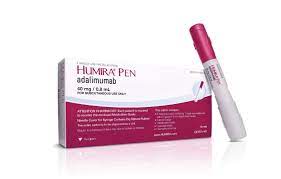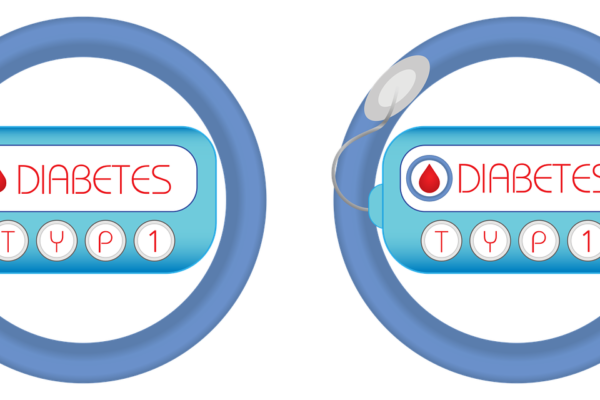Global Pharmaceutical Market
Bulk Drug Park Scheme brought up, considering that, the worldwide pharmaceutical market was estimated to be worth US$1.4 trillion in 2021 and is anticipated to increase at a CAGR of 3-6% to reach US$1.8 trillion by 2026. This includes the cost of COVID-19 vaccinations, which is anticipated to total US$251 billion over the course of this decade. If COVID-19 vaccine costs are excluded, the industry is anticipated to experience a 5% CAGR between 2021 and 2026.
Position of Pharmaceutical Market in India
The leading provider of generic medications worldwide is India. In terms of volume and value, the local market is ranked third globally. India is anticipated to move up to the ninth position in the world by 2026. India has become one of the top producers and suppliers of various COVID-19 vaccines over the past two years. Going forward, India is projected to continue to hold the top spot in the production and distribution of premium generic drugs. It will also continue to be a significant producer of COVID-19 vaccines. The domestic market in India grew by about 11% CAGR between 2017 and 21; for the following five years, growth is anticipated to range between 8 and 11% CAGR.
The Indian pharmaceutical sector, which ranks third globally in terms of volume and tenth globally in terms of value, is regarded as one of the most dynamic and vibrant industries. The industry consists of the two sectors of drugs and medical devices. The Active Pharmaceutical Ingredients (APIs) or Bulk Drug, , formulations, and vaccines segments make up a part of it.
Any substance or combination of substances designed to be employed in the manufacturing of a drug (medicinal) product and that, when used in the production of a drug, becomes an active ingredient of the drug product is known as an active pharmaceutical ingredient (API)
It is also one of the top eight industries for attracting foreign direct investment (FDI) in India, with cumulative FDI inflows totaling USD 16,547 million (INR 88,165 crore), or 3% of all FDI, from April 2000 to June 2020. Policies like enabling 100% FDI through the automatic route for greenfield pharmaceutical companies and 74% in brown field companies have also aided the cause (IBEF 2020). According to the Department of Pharmaceuticals, the pharmaceutical industry has accepted 25 FDI bids totaling Rs. 2,496 crore.
According to estimates, the Indian pharmaceutical sector is worth billions of dollars and has been expanding steadily over time. Due to reasons such a growing population, increased healthcare requirements, rising income levels, and improved access to healthcare services, the market size was predicted to keep growing.
Bulk Drug Park Scheme
The Indian government’s dedication to addressing issues like “self-reliance and self-sufficiency” in all facets of administration and decision-making has steadily increased over the past ten years. Sops and subsidies were important for many industries and stakeholders, but until the Centre launched a number of “Aatmanirbhar Projects,” important decisions and programmes were lacking. One such vital project addresses the demand for Bulk Drugs Parks in India, reducing the nation’s reliance on Chinese Active Pharmaceutical Ingredients (APIs), creating more jobs, and raising more money that will increase the GDP of the nation.
In the nation’s healthcare system, medications are essential. To guarantee that citizens receive accessible, inexpensive healthcare, a steady supply of medications is required. Any interruption in the medication supply can have a serious negative effect on the nation’s drug security.
Future expansion of the pharmaceutical industry depends on our capacity to maintain an uninterrupted flow of high-quality bulk medications and to scale up production in times of emergency. Therefore, it is highly beneficial to be self-sufficient in the production of bulk medications.
The Government of India approved the “Promotion of Bulk Drug Parks” Scheme, which aims to significantly reduce the manufacturing costs of bulk drugs and, as a result, boost the competitiveness of the domestic bulk drug industry by facilitating easy access to standard testing & infrastructure facilities.
In order to significantly reduce the cost of manufacturing bulk drugs and thereby make India self-sufficient in bulk drugs by raising the competitiveness of the domestic bulk drug industry, it is important to encourage the establishment of bulk drug parks across the nation. These parks will provide easy access to top-notch Common Infrastructure Facilities (CIF) for bulk drug units located there.
It will also help assist industry in achieving environmental criteria at a lower cost by using creative approaches to the existing waste management infrastructure and benefits arising due to optimization of resources and economies.
A defined contiguous parcel of land with shared infrastructure facilities for the exclusive manufacture of APIs, Dis, or KSMs is referred to as a bulk drug park for the purposes of this scheme.
Common Infrastructural Facilities include Central Effluent Treatment Plant(s) (CETP), Solid waste management, Storm water drains network, Common Warehouse, Dedicated power sub-station, Raw, Potable and Demineralised Water, Steam generation and distribution system, Common cooling system and distribution network, Internal road network, Compound Wall etc.
This scheme is in the central sector scheme with total financial outlay is Rs. 3000 Crore. The Scheme will provide support for three bulk drug parks in namely, Himachal Pradesh, Gujarat and Andhra Pradesh . A single bulk drug park shall only be eligible for a maximum grant-in-aid of Rs 1000 crore and it will run from FY 2020–2021 to FY 2024–2025.
The Production Linked Incentive (PLI) Scheme for bulk pharmaceuticals was introduced by the Department of Pharmaceuticals in April 2021. It will cost Rs 6,940 crore over six years and cover 53 APIs. The PLI scheme for the pharmaceutical industry will increase the accessibility and cost of pharmaceutical items.
Bulk Drug Park Scheme Impact ; Market Analysis
Indian pharmaceutical exports include a sizeable portion of bulk medications and intermediates. According to Pharmexil’s Annual Report 2020, the export numbers for APIs range roughly from 3525-3867 million USD during a 3 year period.
The three nations receiving the biggest percentages of Indian API exports, both in terms of volume and value, are China, the United States, and Germany.
There is a lot of variation in export in terms of drugs and destinations. Anti-inflammatory drugs such as Ibuprofen, antibiotics such as Penicillin, Erythromycin, Cefadroxil, Rifampicin, and Ciproflaxacin, histamine-2 blockers such as Ranitidine, amino-naphthols, certain vitamins and hormones, and alkaloids such as Nicotine and Menthol are among the medications being exported. The class of organic compounds that includes Cefadroxil, Ibuprofen, Nifedipine, Ranitidine, etc., in terms of percentage share etc.
India is a significant producer of generic medications, but it also significantly relies on imports of API. They made up 63% of all pharmaceutical imports during the 2019–20 fiscal year. India’s imports of API is dependent on China. The top 10 sources of APIs together with their percentages of the overall supply, are listed below.
From an economic perspective, this offers an extremely unbalanced situation. From the perspective of a sustainable pharmaceutical sector, there is always a risk associated with a high reliance on one nation. This is because of the lower price of Chinese APIs and the greater profit margin for formulations or finished pharmaceutical products.
Acetic acid accounts for 16 percent of all bulk medicine imports, followed by penicillin (16 percent), antibiotics like rifampicin (13 percent), and chemical compounds like ibuprofen (10 percent). Additionally, erythromycin (4%), enzymes (3.3%), amino-naphthols (5.7%), and hormones (2.4%) are imported by India.
Corporates have emphasised the importance of an adequate and consistent supply of APIs for medications used in the treatment of these disorders, noting that India has a high disease burden for a variety of conditions, including cancer, diabetes, respiratory illnesses, infectious diseases, and cardiovascular diseases.
Additionally, a number of medications with a significant import dependency are still listed on the National List of Essential Medicine (NLEM). The cardiovascular, diabetic, antibacterial, anti-inflammatory, anti-tuberculosis, and anti-protozoal medicine categories include some of these medications.
In 2022, the global market for APIs was predicted to be worth $222.4 billion, and by the end of this year, it is anticipated to be worth $237.47 billion.
In the API industry, where countries produce extremely cost-effective, massive volumes of output, fierce rivalry is present, continually pressuring suppliers to make capacity-building investments.
Senior industry executives claim that India and many other nations have serious concerns about the quality control of APIs imported from China. Although not all Chinese APIs have quality problems, there have been occasions where officials claim contaminated or poor APIs have made their way onto the market, raising questions about the supply chain’s dependability.
They emphasised that managing the supply of APIs enables improved quality control procedures. India can make sure that the medications produced in the nation satisfy the necessary criteria and are safe for ingestion by concentrating on API production and quality control.
India has been stepping up its regulatory framework-strengthening efforts in order to solve the issue of quality control of imported APIs. However, it was made clear that there need to be strong quality control procedures in place in order to identify and stop the entry of fake and subpar APIs into the market.
According to officials, India can overcome these difficulties and improve the quality and safety of APIs used in the nation by expanding the number of bulk drug parks, enhancing local API production capabilities, and tightening regulatory control.
Building a strong local API manufacturing sector, according to officials, would improve manufacturing resilience and potentially enable shorter response times in emergency situations. Since the program’s announcement, numerous states and business organisations have asked that it be prolonged. Three bulk drug parks won’t be enough to meet the country’s needs for bulk drug production and recommended establishing more such parks, according to a Parliamentary Committee’s statement.
However, so far, things haven’t worked out the way that was anticipated. Since the PLI plan was introduced almost three years ago, India’s reliance on China for APIs and other pharmaceutical items has only risen. According to information from the Ministry of Chemicals and Fertilisers, China accounted for 66 percent of India’s total medical product imports of Rs 35,249 crore in FY22, an increase of 20% from FY21 to Rs 23,273 crore for bulk medicines or APIs and drug intermediates. Additionally, according to data from the trade ministry, imports of 30 important medical gadgets increased by 25 to 152% between April and December 2022 compared to the same period last year.
The aforementioned figures serve as an example of how little progress the government’s PLI scheme has made in the production of pharmaceuticals and medical equipment.
After PLI 1.0 was introduced, the government approved another plan (PLI 2.0) for the pharmaceutical industry with an investment of Rs 15,000 crore to support its progress. PLI 2.0 divides pharmaceutical companies into three groups based on their global manufacturing revenue (GMR) in FY20: Category 1 for those with GMRs above Rs 5,000 crore, Category 2 for those with GMRs between Rs 500 and 5,000 crore, and Category 3 for those with GMRs of less than Rs 500 crore, with incentives ranging from 5 to 10% for a six-year period. The plan consists of APIs from FY21 to FY29.
Due to the hefty investments, experts in the field believe that these incentives are insufficient to entice smaller businesses to participate. MSMEs have hardly received the benefits of around 11% from the PLI scheme.Over 71% of benefits of the PLI scheme have gone to the top companies.
Pharma giants with significant API businesses, including Sun Pharma, Aurobindo Pharma, Dr. Reddy’s, Lupin, Mylan Laboratories, Cadila Healthcare, Cipla, and Glenmark, benefited greatly from the programme. Sushil Finance Group, a brokerage firm, predicts that Indian API-producing companies will expand at a CAGR of 9–11% over the next five years.
India’s production costs are 50% lower than those of wealthy countries, but they are still about 18% higher than those of China. This can be attributed to the fact that raw materials are 25–30% more expensive, electricity is 20% more expensive, and other expenditures like financing, logistics, shipping, etc. are 30% more expensive.
The system, according to pharma companies, is restrictive and does not stimulate innovation very much, which would make it worthwhile to participate in. Research and innovation should be connected to the PLI scheme.
Conclusion
A market must exist for potential investors to be able to manufacture, sell, and make the anticipated profits. Even the allure of the facilities at the bulk medication plants may not be sufficient to attract investments in the first place if the chances of effectively competing against Chinese products are slim. Imports from China will indeed decrease if the government’s plans help Indian businesses develop and sell more goods. These problems must be resolved by the government if India is to truly become self-sufficient in the pharmaceutical sector.
Pharmaceuticals have a sizable domestic and international market, but there are several obstacles the business must overcome in order to boost production and export. They have to do with laws, both domestic and foreign laws, export policies, environmental laws, tax laws, the financial crunch, and inadequate R&D funding.
References:
https://sunpharma.com/wp-content/uploads/2022/08/Sun-Pharma_AR_2021-22.pdf
https://www.ris.org.in/sites/default/files/Publication/Discussion%20Paper%20259%20T%20C%20James.pdf
https://www.biospectrumindia.com/features/73/22307/can-india-dethrone-china-in-api-production.html






Leave a Reply